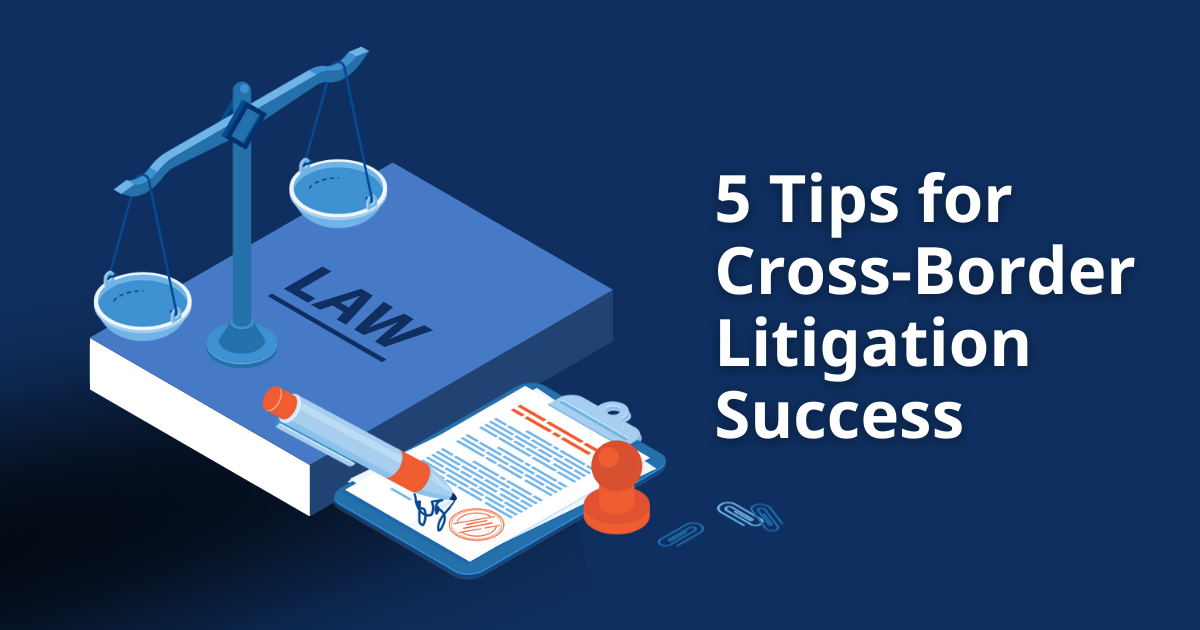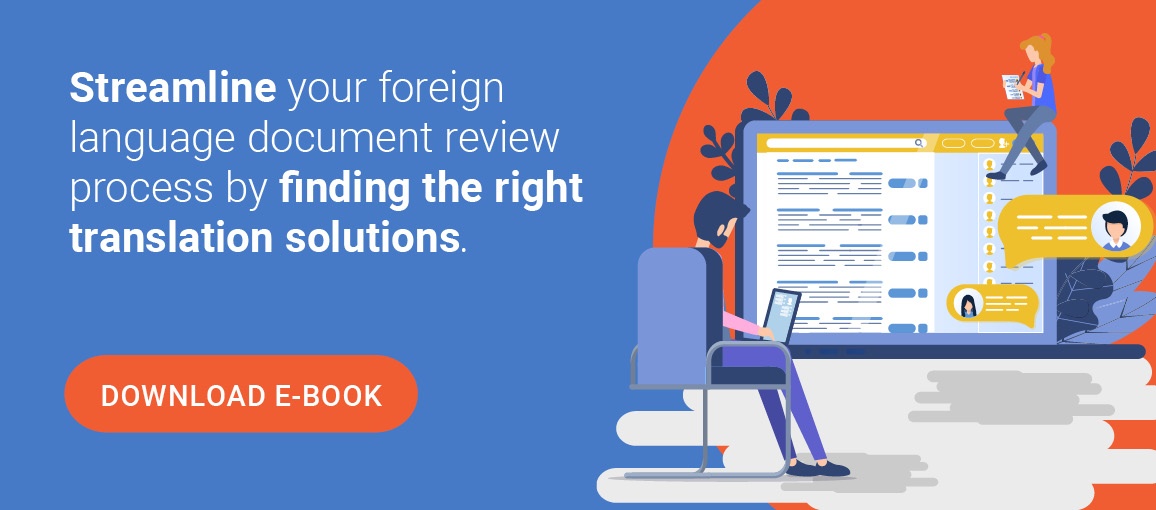As legal writer David Mellinkoff once observed, “The law is a profession of words.” In cross-border litigation, words must be translated and have the same intended impact. Mistakes during the process can have far-reaching consequences. Best case scenario, correcting mistakes costs time and money. Worst case scenario, these errors may affect the disposition of legal matters, from mergers and acquisitions to civil and criminal cases.
Attorneys' offices may not be aware of how the translation process works or how to partner effectively with their language solutions partner. Our team is here to help.
Below we share five tips that attorneys, law firms, and legal departments can utilize when working with translation companies on cross-border litigation to ensure collaboration and success at each stage of the translation journey.
Tip #1: Recognize that your team needs more than translation.
The biggest mistake our team observes is when law firms assume they need direct translation. To be exact, they require legal-specific translation. Law firms wouldn’t expect a writer to create a contract that will hold up in court without legal training. The same fact should be noted for linguists.
Not only must translators be fluent in both languages, but they also must have an in-depth knowledge of culturally specific legal terminology. Words have specific meanings in legal proceedings, and these meanings are often not the same as those used in everyday speech.
It must be noted also that countries have unique legal systems. This may seem an obvious statement, but what isn’t often obvious is how this fact impacts legal document translation. Sometimes, an exact equivalent for a legal term in English does not exist in the target language, and your translator must recognize the correct substitute. Without in-depth knowledge of legal terminology in both the source and target language, it’s almost impossible to get this right.
Your translator must also be aware of issues specific to legal translation, such as the importance of negation terms. When a negation term is incorrectly used in a contract, it can have severe impacts. Your language solutions provider team must be able to use their expertise to inform liability and decrease risk.
The bottom line: if you’d like to make sure that your contracts, mergers and acquisitions filings, and any other important legal documents are ironclad, your team requires partners with experience that correlates with your case. Ask your legal translation service how they vet their legal translators, and make sure to let them know upfront which type of direct experience you require.
Tip #2: Communicate clearly about deadlines.
Legal proceedings happen at a rapid pace that’s unlike other translation projects. Attorneys must consider whether their translation partners have the capacity to handle last-minute requests. If opposing counsel provides documents to your team at the last minute on a Friday, your translation partner needs to be able to accommodate your urgent needs over the weekend. When you clearly communicate your expectations ahead of time, your language service provider can create a plan ensuring that deadlines and requirements are met with ease.
Tip #3: Plan ahead for upcoming projects.
Legal translation needs vary. Your team might be working on a large case that occupies your office for months, or you might have ad hoc legal documents that require translation.
The type of project and the pace of the work you require impact the resources and people your translation partner must have available to provide you with the best possible service. The more your partner knows about what’s in the pipeline, the more effectively they can assist you.
You don’t need a contractual commitment for a specific translation volume, but you should be able to let your vendor know which type of content you’ll be translating, the volume, and the deadline. With this information, the provider can assemble, train, and support a team, leading to greater efficiency and quality.
Tip #4: Use technology to your advantage.
Technologies such as machine translation (MT) have revolutionized the translation services industry. The trick is in knowing how and when to use them effectively. Although accuracy has improved greatly with this technology recently, it’s still not suited as a standalone solution for complicated legal documents.
It takes a single word to change the meaning of a contract, a risk that law firms would face if they utilized MT. Also, MT can’t account for cultural differences that influence different countries’ legal systems, a key element in producing accurate legal translations.
Utilizing translation memories (reusing previously vetted translations to avoid translating the same sentence twice) is recommended as it improves efficiency. Machine translation is often essential in e-discovery, making it possible to go through millions of words quickly to find relevant terms.
As with most endeavors, speed, and price often come at the expense of precision and accuracy. In the translation cycle you’re setting up, you must consider the balance of these priorities you’d like to focus on, and then communicate that to your vendor.
Tip #5: Create a glossary.
A glossary or key terms list is key to creating consistent, accurate translations for ongoing long-term casework. Consistency is of the utmost importance when translating legal documents. It controls risk and liability in contracts. You need to be able to carry your risk and liability statements from one language and legal system to another, and if your keywords and phrases are translated differently at different points in the document, it’s easy to lose the thread.
A glossary of key terms and phrases and their approved translations will ensure that terms get translated the same way each time, controlling your risk and liability and preventing confusion. This should be part of your language service vendor’s work.
By keeping these five tips from our team in mind as you build your partnership, you can ensure a smoother, more efficient translation process while minimizing the chance of errors. It’s a win-win situation all around that hones your firm’s competitive edge in cross-border litigation.



